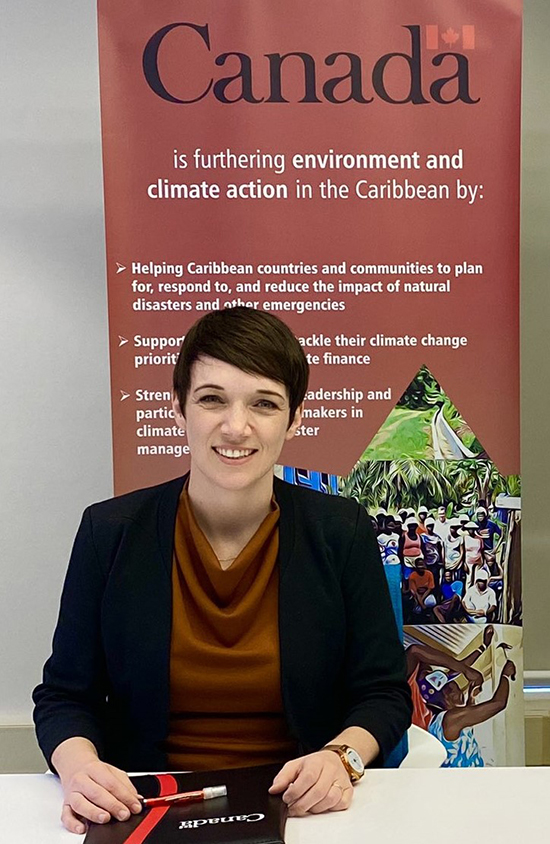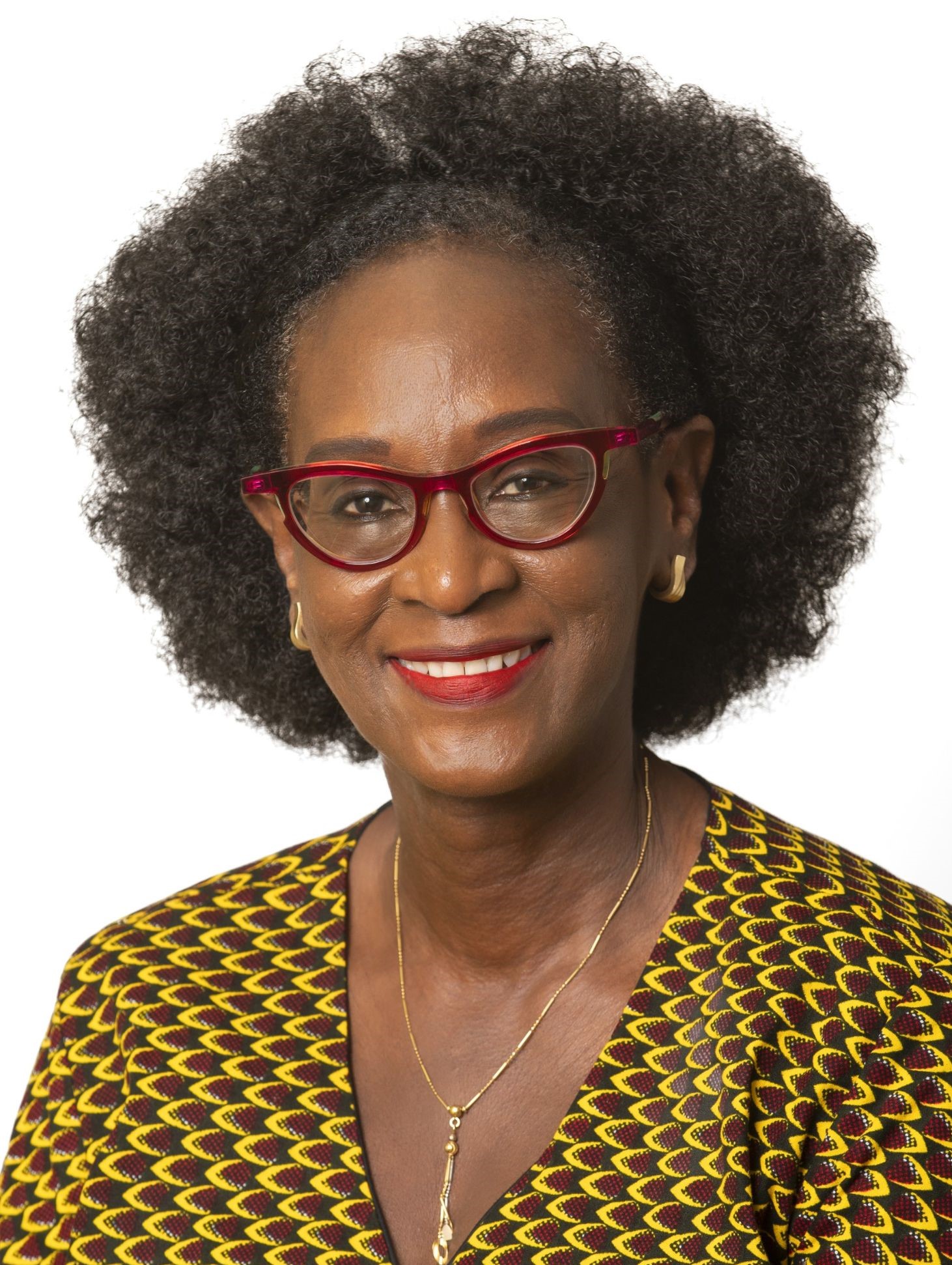Flagship Ottawa meeting brings focus on sustainable development challenges, opportunities in the Caribbean

When representatives of some 28 countries gather in Ottawa from June 17 to 20 for the 54th Annual Meeting of the Board of Governors of the Caribbean Development Bank (CDB), it will mark another milestone in Canada’s long history with the Caribbean and with the key regional financial institution.
The meeting will bring together the highest decision-making body of the bank, which helps Caribbean countries finance social and economic development programs. There will also be a gathering of thought-leaders, academics, financial experts, government and civil society officials, youth and Indigenous groups committed to addressing issues of critical importance to the region, such as climate change.
“This is a flagship event for an institution that is well positioned to help the Caribbean with its sustainable development challenges into the future,” says Therese Turner-Jones, acting vice-president of operations for the bank, which is based in Barbados.
The CDB was established in 1969, following a Canada/Commonwealth Caribbean Conference 4 years earlier that recommended studying the creation of a financial institution to serve Commonwealth Caribbean countries and territories. Its purpose is to contribute to the region’s growth and development, while promoting economic cooperation and integration among members.

Credit: Courtesy of Therese Turner-Jones
“We are transforming lives by thinking along many dimensions: education, infrastructure, social development, climate change, gender equality, Indigenous issues, financial resilience,” Turner-Jones says. “The goal is to support growth in the region.”
“A big part of Canada's footprint in the Caribbean”
Today the CDB comprises 19 regional borrowing countries, 4 regional non-borrowing countries and 5 non-regional, non-borrowing countries, including Canada, a founding member of the institution.
The bank really is a big part of Canada’s footprint in the Caribbean,” says Sharon Peake, Canada’s executive director to the CDB Board of Directors, which oversees the institution’s policy and operations.
Peake, who is executive director for the Caribbean Regional Development Program at Global Affairs Canada, notes that Canada currently serves as chair of the CDB’s Board of Governors. The country has long ties to the Caribbean Community (CARICOM), she says, and hosted the first Canada-CARICOM Leader’s Summit in October 2023. “We have a big commitment at the highest level toward this ongoing relationship, and close links with the Caribbean.”
For example, Canada is the largest contributor to the CDB’s Special Development Fund (SDF), a pool of resources for borrowing member countries that are lower income or more vulnerable to climate change. The funds are used to address poverty and human development challenges. SDF loans have lower interest rates and longer repayment periods than regular CDB loans, and grants are available for technical assistance, capacity building and community-driven projects.

Credit: Amanda Martinez
The SDF has provided more than $2.1 billion in loans and grants to the region since 1984. These projects have had a significant impact on regional development in areas ranging from education and infrastructure to water security and capacity building for government and national institutions.
A region highly vulnerable to climate change
Climate change is a major factor in the Caribbean, whose geographical and physical characteristics make its countries highly vulnerable to natural disasters and hazards such as tropical storms, hurricanes, floods and droughts. The CDB assists borrowing member countries with disaster risk reduction as well as reconstruction and rehabilitation efforts, says Valerie Isaac, division chief for its environmental sustainability unit.
The bank, an accredited partner institution of the Green Climate Fund and the Adaptation Fund, ensures that environmental and social performance standards are implemented across all its initiatives, she notes.
“With one of the most vulnerable regions, it’s imperative that the projects we finance are able to withstand climate impacts,” says Isaac. The CDB works with communities to scale up resilience through their social and economic infrastructure, and it promotes renewable energy and energy efficiency.
Climate change is especially important to the bank because it has a small basket of client countries, she explains. “We’ve had instances where storms impact more than 1 country severely.” Recent Category 5 hurricanes, Irma and Maria in 2017 and Dorian in 2019, caused hundreds of deaths and brought devastating economic losses. For example, the island of Dominica reported that it suffered losses that amounted to more than 226 per cent of its GDP.

Credit: Caribbean Development Bank
Isaac points out that many social development sectors are susceptible to climate change impacts. “You have damage in coastal areas, you have biodiversity loss, you have damage to agriculture and drought. These are all critical for the region,” she says, adding that Canada has been a “key partner for the bank” in climate change programming.
In Dominica, a Canadian-supported project rehabilitated and upgraded 5 elementary schools demolished by Hurricane Maria, while incorporating climate resiliency, school safety and the gender-specific needs of female students, women teachers and staff.
“The Canadian government really came through with a pledge to ensure we could rebuild our schools,” says Cozier Frederick, Minister for the Environment, Rural Modernization and Kalinago Upliftment in Dominica. “It provided us with the ability to get some of the best building materials available and to bring traditional knowledge and local expertise into the process.”
A commitment to resilient communities and energy transition
Frederick, a Member of Parliament and an Indigenous member of the Kalinago Territory, which is in his constituency, says another Canadian project through the CDB includes support for the Kalinago people to improve their climate resilience and disaster preparedness. This involves the development of a comprehensive disaster risk management plan, training in climate-smart agriculture, the construction of emergency shelters and the strengthening of governance mechanisms to integrate climate change, disaster management and gender equality into decision making.

Credit: Dezarie Burnette
He says Dominica, an island in the Eastern Caribbean with a population of 72,000, including 3,000 Kalinago people, “does nothing much to affect climate change in terms of greenhouse gas emissions. But we face hurricanes, water levels rising, rainy and hot seasons shifting.” That’s what brought the country to call on the CDB, “and Canada responded to ensure that we could have measures in place to deal with these weather events,” he says.
“To build resilient communities, people need to take ownership,” Frederick explains, for example, to not only build infrastructure to withstand a hurricane but also manage and maintain it. “We are going to do everything to make sure that we are prepared.”
In terms of climate action, Peake notes that Canada, in partnership with the CDB, has been instrumental in programming that promotes renewable energy and energy efficiency. Global Affairs Canada’s Supporting Resilient Green Energy (SuRGE) program, for example, includes assistance for sustainable energy development.
“Energy transition is important for the Caribbean,” says Peake, adding that initiatives such as SuRGE focus on increasing the scale and pace of green energy. She says the CDB has a niche that other partners don’t have, “because of the role it plays in the region.” There is a growing interest in enabling and encouraging private sector investment in the field.
Facing challenges, looking forward
The need to mobilize resources from the private sector for sustainable development will be one of the topics addressed at the upcoming meeting, says Turner-Jones. The theme is “Partnerships for Resilient Prosperity”, highlighting the CDB’s leadership role in supporting the region.
Turner-Jones says the event is an opportunity for key decision makers to meet and discuss important financial and economic issues that affect the development of the Caribbean. She points out that the event will include special seminars, conferences and lectures on issues including supply chain logistics in the Caribbean, creative industries and how to make the region more investor friendly.
Peake says there’s a crucial focus on the CDB’s efforts to address gender equality, youth, Indigenous people and marginalized populations. “Having the opportunity to spotlight those issues here in Canada is very exciting. I'm looking forward to everyone being able to see what we do here and what we have on offer,” she says. “It allows us to showcase Canada’s commitment and our contributions to the bank over the years.” Canada previously hosted the annual meeting of the CDB Board of Governors in Halifax in 2008 and in Toronto in 1997.
Peake expects the Ottawa meeting to “generate some good discussion about the global financial architecture within which we’re working and what should be done” to best support the CDB’s borrowing members. “My hope is that we can continue to focus on what the bank should be doing within this global climate to really address and prioritize the needs of Caribbean countries,” she adds.
- Date modified: